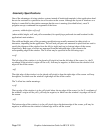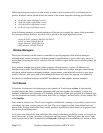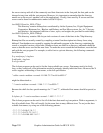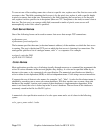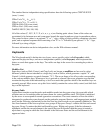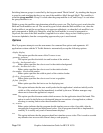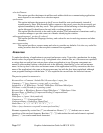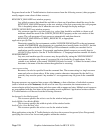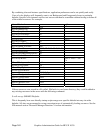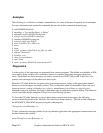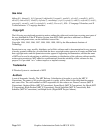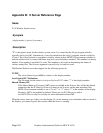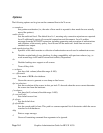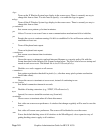IncludeFile lines are interpreted by replacing the line with the contents of the specified file. The word
"include" must be in lowercase. The filename is interpreted relative to the directory of the file in which
the line occurs (for example, if the filename contains no directory or contains a relative directory
specification).
If a ResourceName contains a contiguous sequence of two or more Binding characters, the sequence will
be replaced with single "." character if the sequence contains only "." characters, otherwise the sequence
will be replaced with a single "*" character.
A resource database never contains more than one entry for a given ResourceName. If a resource file
contains multiple lines with the same ResourceName, the last line in the file is used.
Any whitespace character before or after the name or colon in a ResourceSpec are ignored. To allow a
Value to begin with whitespace, the two-character sequence "space" (backslash followed by space) is
recognized and replaced by a space character, and the two-character sequence "tab" (backslash followed
by horizontal tab) is recognized and replaced by a horizontal tab character. To allow a Value to contain
embedded newline characters, the two-character sequence "n" is recognized and replaced by a newline
character. To allow a Value to be broken across multiple lines in a text file, the two-character sequence
"newline" (backslash followed by newline) is recognized and removed from the value. To allow a Value
to contain arbitrary character codes, the four-character sequence "nnn", where each n is a digit character
in the range of 0-7, is recognized and replaced with a single byte that contains the octal value specified
by the sequence. Finally, the two-character sequence "\" is recognized and replaced with a single
backslash.
When an application looks for the value of a resource, it specifies a complete path in the hierarchy, with
both class and instance names. However, resource values are usually given with only partially specified
names and classes, using pattern matching constructs. An asterisk ("*") is a loose binding and is used to
represent any number of intervening components, including none. A period (".") is a tight binding and is
used to separate immediately adjacent components. A question mark ("?") is used to match any single
component name or class. A database entry cannot end in a loose binding; the final component (which
cannot be "?") must be specified. The lookup algorithm searches the resource database for the entry that
most closely matches (is most specific for) the full name and class being queried. When more than one
database entry matches the full name and class, precedence rules are used to select just one. The full
name and class are scanned from left to right (from highest level in the hierarchy to lowest), one
component at a time. At each level, the corresponding component and/or binding of each matching entry
is determined, and these matching components and bindings are compared according to precedence
rules. Each of the rules is applied at each level, before moving to the next level, until a rule selects a
single entry over all others. The rules (in order of precedence) are:
1. An entry that contains a matching component (whether name, class, or "?") takes precedence
over entries that elide the level (that is, entries that match the level in a loose binding).
2. An entry with a matching name takes precedence over both entries with a matching class and
entries that match using "?". An entry with a matching class takes precedence over entries
that match using "?".
3. An entry preceded by a tight binding takes precedence over entries preceded by a loose
binding.
Graphics Administration Guide for HP-UX 10.20
Page 138



